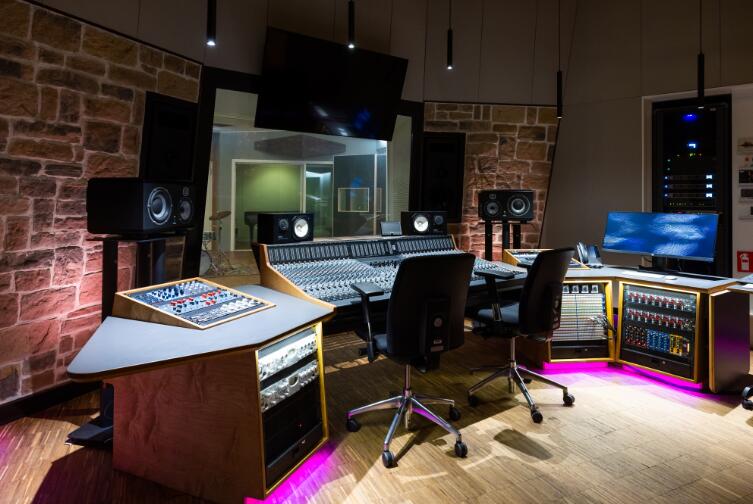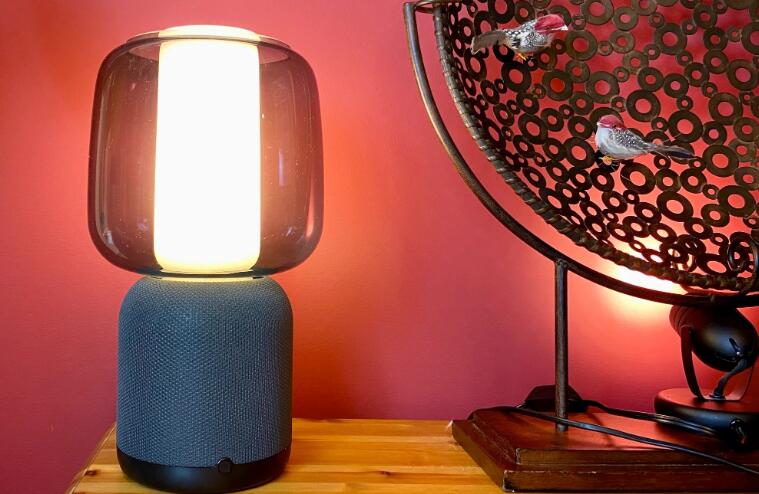Creating a recording studio space can be intimidating, especially if you’re new to the game. But don’t worry! We’ve got your back with this comprehensive guide on how to choose the best lighting for your studio.
From warm and cool bulbs to music lamps with wireless speakers, we’ll cover all of the basics so that you can create an environment perfect for unleashing your creativity. So let’s get started and start illuminating your ideas!
Match Music Lamp to Complement Your Studio Walls Color?
Color is an important factor when selecting the right lamp for your studio. While there are no hard and fast rules when it comes to matching colors, there are some tips to help you choose a lamp that will complement your walls.
1. Why Matching Can Be Beneficial
One of the main benefits of choosing a lamp that matches the color of your studio walls is that it can create a cohesive and polished look. This is particularly important if you have a specific color scheme that runs throughout the room, as it can help tie everything together. Another advantage is that a matching lamp can help make the room feel more spacious, as it blends in with the walls and does not take up any additional visual space.
2. When Contrast Works Best
While matching your lamp to your studio walls can be beneficial in some cases, it’s not always the best option. Sometimes, choosing a lamp with a contrasting color can create a more dramatic effect and add visual interest to the space. This works particularly well if you have a neutral or monochromatic color scheme in the room, as a pop of color can help break up the monotony.
3. How to Choose a Lamp Color
So, how do you choose the right lamp color for your studio room? The most important thing to consider is the overall color scheme of the space. Are your walls a cool color, such as blue or green, or warm, such as yellow or red? Once you’ve identified your color scheme, look for a lamp with a similar tone or hue to complement it. You can also choose a lamp with a pattern or texture that picks up on the colors in the room for added visual interest.
Can A Music Lamp Serve as Your Primary Lighting Source for a Studio Room?
Music lamps are ideal light fixtures that give off task and ambient lighting. However, the brightness and the coverage area capacity differ according to the lamp’s wattage rating. For a small studio room, a music lamp can provide ample lighting, particularly if you don’t need it to be floodlit.
Alternatively, if your studio room is substantial or requires uniform lighting throughout, a music lamp may not sufficiently light up the room. In this case, a music lamp can serve as an accent lighting source in one corner of your studio room, creating a charming ambiance with your favourite playlists setting up the tone.
Furthermore, if you’re looking for a proper lighting source that eliminates dark spots and shadows, using a music lamp alone may not guarantee adequate illumination. Consider adding additional lighting sources such as overhead lighting to complement the music lamp and keep your studio well-lit.
Additionally, a music lamp’s intensity can either enhance or detract from your studio room’s functionality. As a task lighting source, your music lamp should help you see what you’re doing while creating music. If the music lamp’s brightness is inadequate, it can lead to eye strain and headaches, hindering your desired productivity levels.
Lastly, your choice of music lamp determines the intensity of lighting it provides. Ensure that your lamp is suitable for the intended purpose and can provide the lighting level that you desire.
Should I choose a lamp with a bulb that emits warm or cool light?
Creating the perfect environment for a music studio is essential for any artist’s creative process. A music studio should be comfortable, relaxing, and inspiring to produce the best results. One aspect that can make a huge difference in the ambiance of your studio is the type of lighting. When choosing the bulb for your lamp, you’ll be faced with the decision of whether to go for a warm or cool light.
1. Personal Preference
Choosing between warm or cool light ultimately comes down to personal preference. Some people prefer warm lighting because it provides a more relaxing and cozy feeling. Others might prefer cooler lighting because it can make the space feel more energized and focused. Ultimately, you need to choose the option that will allow you to be most productive and comfortable while working in your studio.
2. Use of the Lamp
Another factor to consider when choosing between warm or cool lighting is the use of the lamp. If you plan on using your lamp primarily for reading or relaxing, then a warm light may be more suitable. Warm light can create a calming ambiance that fits perfectly for activities that require a relaxed atmosphere. For tasks that require a more focused and alert state of mind, such as playing a musical instrument, a cooler light might be the better option.
3. Color Temperature
When choosing the bulb for your lamp, you’ll notice that each option has a different color temperature, which is measured in Kelvin. Warm light bulbs have a lower color temperature, ranging from 2000K to 3000K, while cool light bulbs have a higher color temperature, ranging from 4000K to 6500K. The color temperature can have a significant impact on the ambiance and mood of your studio, so it’s important to choose wisely.
4. Mood and Environment
The mood and environment you want to create in your studio will also play a significant role in deciding which type of lighting is best suited for your space. If you’re going for a cozy, intimate ambiance that encourages relaxation, then warm light bulbs with a lower color temperature may work best. On the other hand, if you want a brighter, more vibrant environment that stimulates creativity and energy, then cool light bulbs with a higher color temperature will serve your purpose.
Can I use a music lamp with a wireless speaker in my studio?
A music lamp with a built-in wireless speaker can be a great addition to a recording studio. It allows you to play music wirelessly from your phone or computer without the need for additional cords or speakers. However, before you go out and purchase a music lamp, it’s important to understand what you’re getting into.
One of the primary benefits of using a music lamp with a wireless speaker in your studio is convenience. You can easily stream music without having to worry about cords, and you can control the volume and playback from anywhere in the room. This can be particularly useful if you’re working on multiple projects and need to switch between different playlists or artists quickly.
Another benefit is the compact size of many music lamps. Since the speaker is built into the lamp, you don’t need to take up additional space with separate speakers. This can be a real space-saver, particularly in smaller studios where every inch counts.
However, the sound quality on some models may not be up to par with separate speakers. Also, depending on the design of the lamp, the light and sound may not be evenly distributed throughout the room. This could lead to uneven illumination or audio that is louder in some areas of the room than others.
Anyway, think about the type of music you’ll be playing and the size of your studio. Some music lamps are more suited for quiet or ambient music, while others are designed for larger spaces and more energetic music.
Conclusion
In this blog, we discussed the importance of lighting when creating a studio space. We explored how to choose between warm and cool lighting, the use of lamps, color temperature, and the mood and environment you want to create in your studio. We also looked at whether or not a music lamp with a wireless speaker is suitable for use in a recording studio.
Ultimately, there is no one-size-fits-all when it comes to lighting in the studio, so take the time to explore your options and find out what works best for you. With the right lighting setup, you can create a comfortable and inviting atmosphere that will help bring out your creativity and ideas. Good luck!


